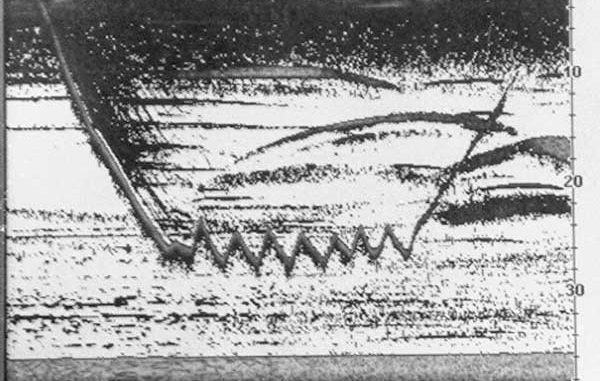
The sensitivity control on a fish-finder is a lot like the volume adjustment on a radio. Both control the amount of amplification applied to received signals, and neither have any control over the amount of power that is transmitted to them.
Turn up the amplification and you can detect weaker signals, turn it down and only the stronger signals come through.
Turning the level up also increases the amplification applied to any interference present. This adds static to your radio music and clutter on your fish-finder’s screen. Turn it up too high and the static wipes out the radio music and blacks out the fish-finder’s screen.
The automatic sensitivity control on today’s fish-finders works better than ever, but there are times when it needs your help. Clear water provides concert hall acoustics for sonar, but water containing particulate matter like dirt and algae absorbs sound and limits sonar performance. A fish-finder’s computer automatically increases the sensitivity setting as the water under your boat gets deeper, and decreases it as your boat moves shallower.
The computer also factors in any filters you have engaged, and tries to balance everything according to instructions built into its software. Sometimes it gets confused.
On some days, your screen shows nothing but a bottom contour, and you wonder where all the fish have gone. Turn up the sensitivity, and you may discover they still are between you and the bottom. They were invisible because your unit’s computer reacted to an odd set of circumstances and turned down the sensitivity too low to show fish.
If you’re tracking fish at 30 feet, and your boat moves over a drop-off from 50 to 100 feet, your screen suddenly may darken with enough interference to hide the fish. The computer sensed the sudden depth increase and turned up the sensitivity to compensate. It doesn’t know that you’re more interested in what’s at 30 feet; it thinks you want enough sensitivity to see fish on the bottom. Your best course here is to disengage the automatic control and set your sensitivity manually.
I use the same manual sensitivity adjustment technique on all fish-finders. I turn it up until I see random interference all over the screen, and turn it back down until the interference decreases enough for me to see important details through it. If I’m not looking for tiny details like weeds or baitfish, I turn it down far enough to make all of the interference disappear.
A setting that’s just right for fishing is too high for running the boat at speed. You have to reset it after you plane off. I usually switch back to automatic adjustment and let the computer set it while running, then switch back to manual and set it myself for fishing.
While fishing, I keep surface clutter filters and all other interference filters set at the lowest level that gives me a screen picture I can understand easily. These features are there to take care of problems, and if I don’t have those problems I’d rather not put up with the detail-hiding side effects that most filters cause.
Try setting the sensitivity yourself. You may be surprised to see what you’ve been missing.


